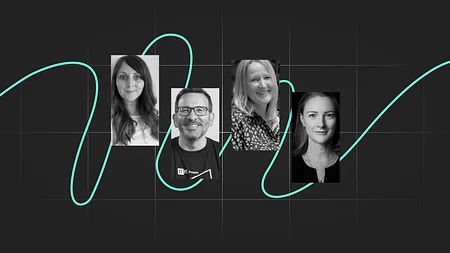11 Mobile Trends That Will Delight Your Customers
At 11:FS, we spend a lot of time looking at next-generation mobile trends and technology. Every now and again we come across a product or feature that just blows us away. It can be as simple as a smart integration with another product or as complicated as a whole app that’s powered by bleeding edge technology.
To kick off the 11:FS Pulse Research series, we thought we’d share a handful of our favourite ‘oh wow’ moments. You probably use a handful of these already, but we recommend checking each one out in detail. As always, our focus is on finding the most important and interesting trends in financial services, but we’ve also included some more general mobile trends that we feel will have an impact on the ecosystem as a whole.
 11:FS Pulse users can see it in action here. This is pure AI-driven magic of the kind we’re sure to see more of in the coming years.
11:FS Pulse users can see it in action here. This is pure AI-driven magic of the kind we’re sure to see more of in the coming years.
 You can view the process in 11:FS Pulse.
You can view the process in 11:FS Pulse.
1. Brolly’s Gmail search
London-based insurtech company Brolly sells itself as an AI-driven personal insurance concierge. And they’re not kidding. This is one clever piece of technology. During the signup process, after users have entered details of their existing insurance policies, Brolly offers to connect to Gmail and shovel through years of emails to find all of your old policies. 11:FS Pulse users can see it in action here. This is pure AI-driven magic of the kind we’re sure to see more of in the coming years.
11:FS Pulse users can see it in action here. This is pure AI-driven magic of the kind we’re sure to see more of in the coming years.
2. Augmented Reality Tape Measures
With Google and Apple betting big on AR and VR, this space is might finally live up to the decades of hype around augmented reality. Case in point is this early demo of a tape measure built on top of Apple’s ARKit. Astonishingly accurate measurements based on image processing from a standard smartphone camera. It’s early days, but the sheer scale of the investment pouring into the sector means that this area is shaping up to have serious growth potential.3. Monzo’s Magic Links
Authenticating email addresses and phone numbers during an onboarding process can be a fiddly business. It’s something that old fashioned banks haven’t exactly cracked. Enter Monzo and magic links! After inputting their email, users are automagically directed to their email app of choice. From there, users receive an email from Monzo that includes a link which, when tapped, redirects the user back to the Monzo app. The whole process (which you can view on Pulse) takes a matter of seconds and when it’s done, the user’s email address is linked to the app. It’s a simple, smart way to onboard customers.4. mBank’s BLIK payments
Poland’s banking system benefits from being comparatively young and competitive. Every now and again they team up on a collaboration and produce something fantastic. The BLIK code (which was developed by a startup of the same name) has been rolled out by many of the country’s banks. Within the mBank app, users can generate a six-digit code that can then be used to make payments in a number of places without requiring a card. 11:FS Pulse users can check this out here. Whether you’re looking to withdraw cash from an ATM or you’re making a purchase over the phone, BLIK offers a secure, personalised, and instant way to do that. We’ll admit, this is a delight for the more technically minded, but a delight nonetheless.5. Deliveroo bill split with Monzo
Sometimes you don’t need impressive technology to delight. All it takes is a bit of teamwork between your favourite apps.Customers who have both a Monzo and a Deliveroo account have recently noticed the food delivery company has begun offering anyone who holds an account with the London-based challenger bank the option to split the bill with friends. A great lesson in why integrations and partnerships are as important as innovation.Our own @JamesStorer wrote about building the new "Split the Bill" experiment, now live for @monzo users on Android! https://t.co/Q5sEmZ540Q
— Deliveroo Design (@DeliverooDesign) 31 August 2017
 You can view the process in 11:FS Pulse.
You can view the process in 11:FS Pulse.


